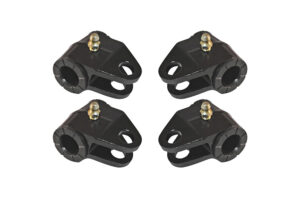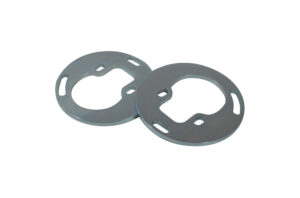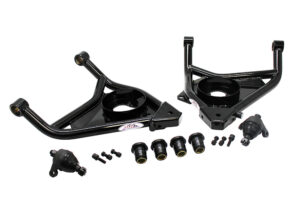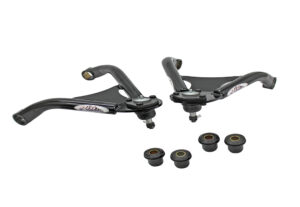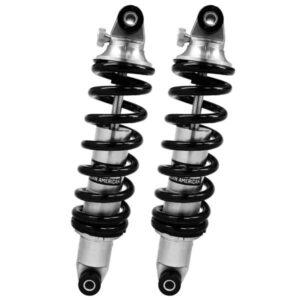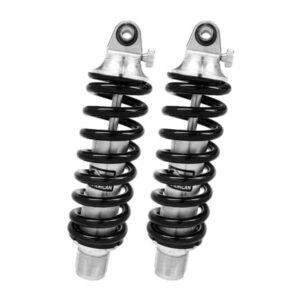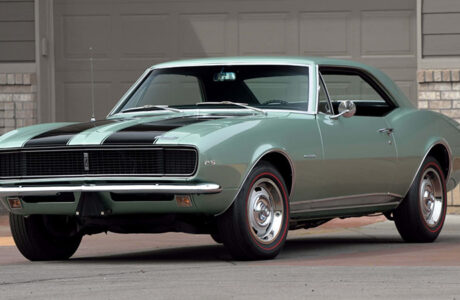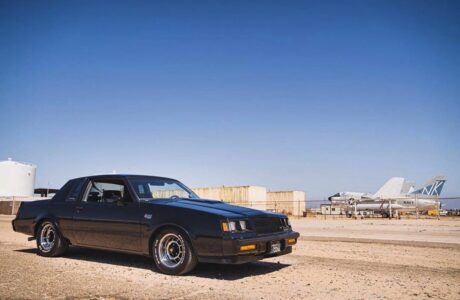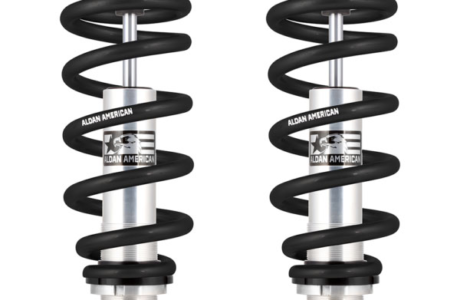Beyond the Kit: Why Savvy Donk Builders Opt for Custom Suspension Solutions
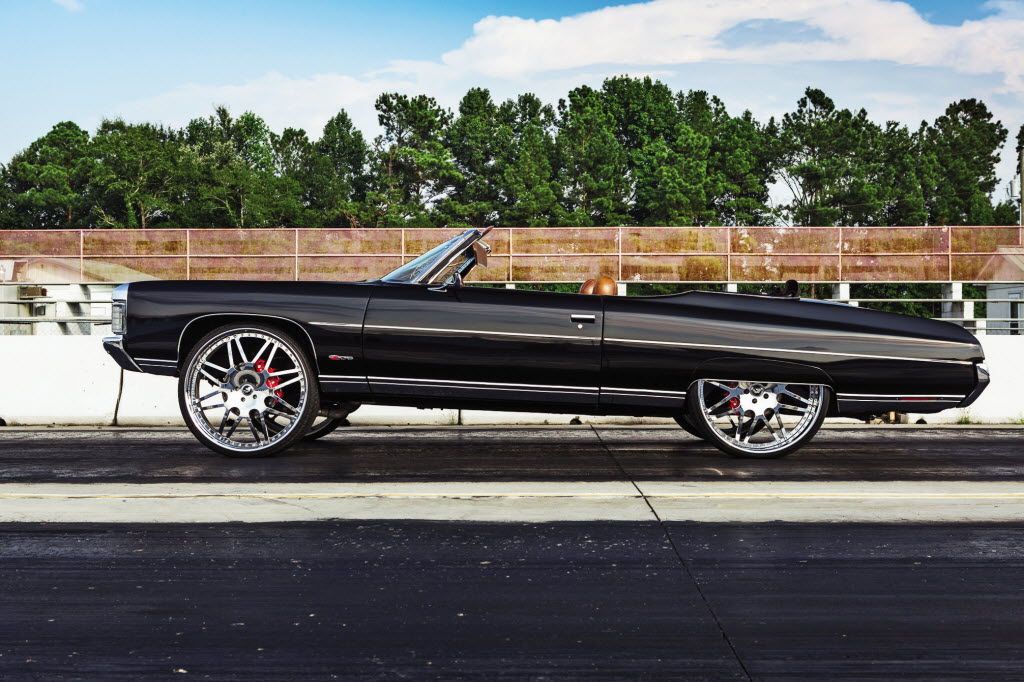
One of the hallmark features of a Donk is its raised suspension, allowing it to accommodate much larger wheels than stock. This usually involves installing a lift kit, ranging from a few inches to over a foot of lift. The process typically includes replacing or modifying the springs, shocks, control arms, and spindles to ensure the car can safely handle the increased height and weight of larger wheels while delivering the appearance the builder is after.
While comprehensive kits can be very convenient and ensure components’ compatibility, buying parts separately offers flexibility and customization that can be crucial for a project as personal and varied as building a Donk.
While this approach requires a deeper understanding of suspension systems and a clear vision of the desired outcome, it can lead to a more satisfying and tailored build. Aldan American is here to help you configure a Donk build through this guide and our in-house specialists, who are just a phone call away.
Let’s get started.
Four Reasons to Purchase Components Separately versus a Kit
While comprehensive lift kits offer a convenient, all-in-one solution for modifying the suspension to lift the vehicle, there are several reasons why a Donk builder might choose to buy suspension components separately rather than purchasing a comprehensive kit:
Customization: One of the primary reasons to build a Donk is the desire for a higher level of customization. A builder can tailor the suspension to meet specific needs, preferences, and performance goals by selecting components individually.
Quality Control: Purchasing components separately allows the builder to choose each part based on its quality and performance reputation.
Expertise and Preferences: Builders with a strong understanding of automotive mechanics and suspension design might prefer selecting individual components to optimize the vehicle’s handling, ride quality, and appearance to their exact specifications.
Upgrading in Stages: Some builders might upgrade their Donk in stages, starting with essential modifications and gradually adding more as their budget allows or as their vision for the project evolves.
Getting Started
When lifting a vehicle to fit larger Donk wheels to an Impala, Caprice, Fleetwood, LeSabre, or Crown Vic, the springs and the shock absorbers must accommodate the increased ride height while ensuring proper vehicle handling and safety. Let’s take a look at shocks, then springs.
Selecting Shock Absorbers
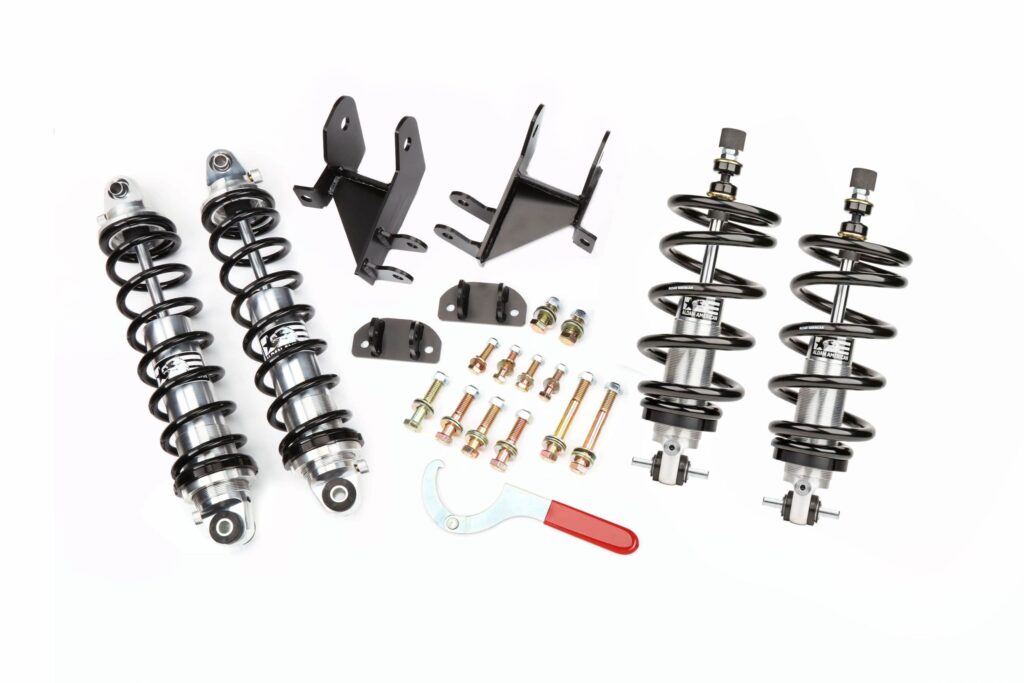
The shock absorber length needed to Donk a ride depends on several factors, including the vehicle’s specific model year and the lift’s height.
General Guidelines for Choosing Shock Length:
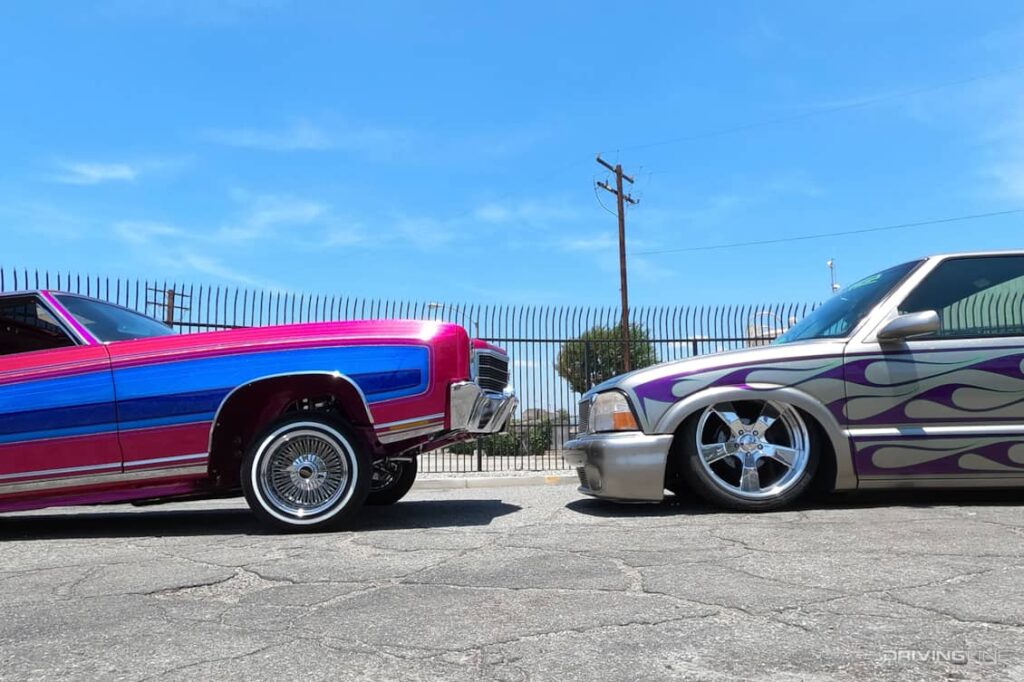
Determine the Lift Size: The first step is to decide how much you want to lift your ride. Lifts for Donk vehicles can range from a few inches to over a foot. The amount of lift will directly influence the required length of the shock absorbers.
Extended Length vs. Compressed Length: When selecting shock absorbers, consider extended and compressed lengths. The extended length must be long enough to support the car at its new height without maxing out. The compressed length should ensure that the shock can compress without bottoming out, which could cause damage or a harsh ride.
We’ll look at the stock shocks installed on a 1973 Chevrolet Impala as a starting point. These dimensions can vary depending on the specific brand and model of the shock absorber.
Front Shock Absorbers: The typical extended length can range from approximately 13 to 15 inches, with a compressed length of about 9 to 11 inches.
Rear Shock Absorbers: The rear shocks might have a slightly different range, with extended lengths typically around 14 to 16 inches and compressed lengths from about 9 to 11 inches.
If the vehicle is being modified or lifted, especially in a Donk modification, the required shock absorber lengths would be different to accommodate the altered suspension geometry and increased ride height. Let’s look at three examples.
Low Lift Configuration
Purpose: Slightly raised stance, minimal modifications required.
Extended Length: Approximately 20 to 22 inches
Compressed Length: Approximately 12 to 14 inches
Remarks: Suitable for modest wheel upgrades, possibly up to 22 inches, while maintaining closer-to-stock driving characteristics. Aldan American offers adjustable shock absorbers within these lengths.
Medium Lift Configuration
Purpose: Noticeable lift, accommodating larger wheel sizes, up to 24-26 inches.
Extended Length: Approximately 24 to 26 inches
Compressed Length: Approximately 14 to 16 inches
Remarks: This setup is a balance between a noticeable lift and maintaining reasonable handling dynamics. It requires more significant suspension modifications but provides greater flexibility for wheel and tire choices. Aldan American offers adjustable shock absorbers within these lengths.
High Lift Configuration
Purpose: Maximum lift for the most dramatic appearance, accommodating wheels 26 inches and above.
Extended Length: Approximately 28 to 30 inches or more
Compressed Length: Approximately 16 to 18 inches or more
Remarks: This setup is extreme for the most visually impactful Donk build. It requires extensive modifications to the suspension, steering, and possibly drivetrain components. Always prioritize safety and handling. High lifts can significantly alter the vehicle’s center of gravity and handling characteristics.
Selecting the Correct Shock Absorber for your Build
Given the custom nature of Donk builds, these lengths may need to be adjusted based on the exact lift kit used, wheel and tire size, and other modifications. Working with professionals like Aldan American, specializing in vehicle suspension systems, is highly recommended to ensure that springs and shocks are selected for performance and safety.
Selecting the correct shock absorbers for a Donk conversion involves more than just matching lengths. The vehicle’s weight, desired ride quality, and handling characteristics must also be considered.
Advantages of Adjustable Shock Absorbers
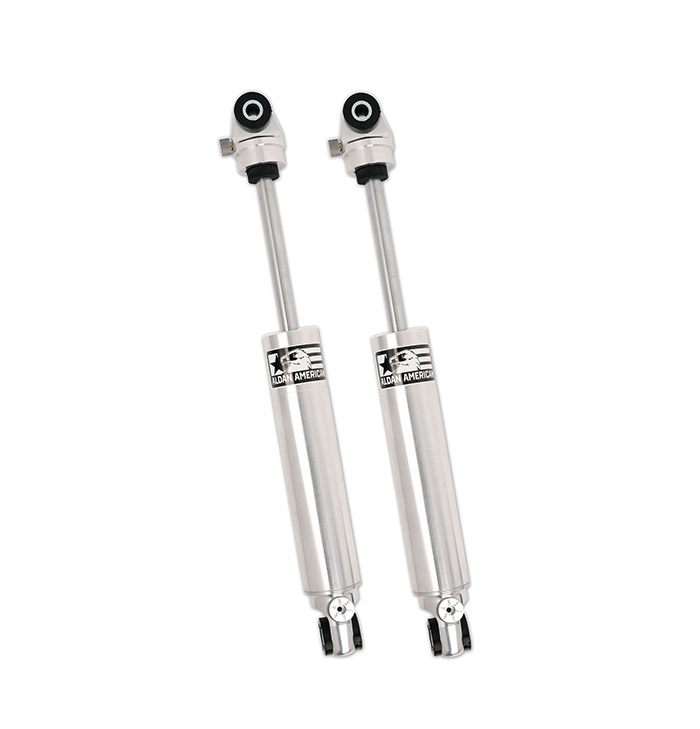
Incorporating Aldan American coilover shocks with adjustable compression and rebound settings into a Donk build offers several advantages, mainly because these vehicles undergo significant modifications that affect their weight distribution, handling, and overall dynamics.
Aldan American single and double adjustable shocks provide the flexibility needed to fine-tune the suspension to match the unique characteristics of each build.
The ability to fine-tune the shock absorbers to match the vehicle’s characteristics and the driver’s preferences is a substantial benefit that cannot be understated. However, achieving the best results should include consultation with suspension experts familiar with Donk modifications at Aldan American.
Selecting Springs
Selecting the correct springs for a Donk conversion involves understanding the modified vehicle’s aesthetic goals and functional requirements. Since Donks are characterized by their lifted stance and large wheels, choosing springs involves more than aesthetics; it’s crucial for maintaining ride quality, handling, and safety.
Aldan America offers a range of springs in five lengths and six spring rates, including those appropriate for Donk applications.
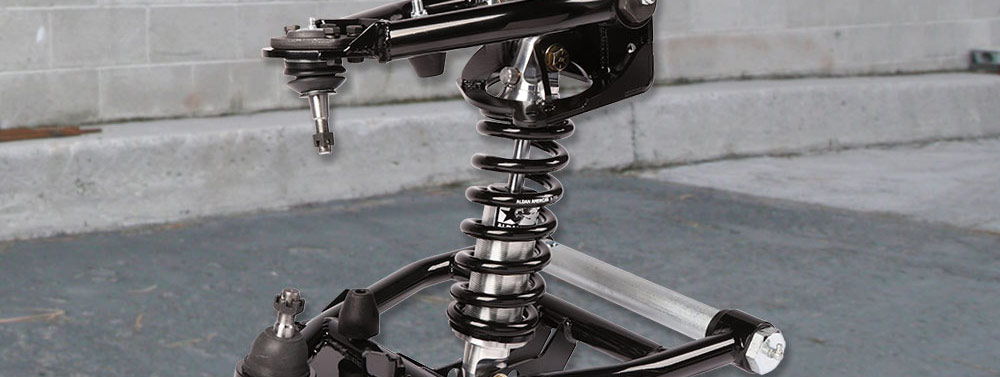
Here are the steps in selecting springs for a Donk conversion:
1. Determine the Desired Lift Height
Establish the Goal: Decide how much you want to lift the vehicle. This decision will guide the selection of springs and possibly other suspension components.
2. Consider Wheel and Tire Size
Compatibility: The size of the wheels and tires you plan to use will influence the required spring rate and lift height. Larger wheels may require a higher lift for proper clearance.
3. Calculate the Required Spring Rate
Spring Rate: This is the weight needed to compress the spring by one inch. Heavier vehicles, or those with larger wheels, may require springs with a higher spring rate to maintain proper suspension function and ride quality.
Vehicle Weight: Consider the weight of your vehicle and any modifications that add weight, such as audio systems or custom bodywork.
4. Account for Suspension Geometry
Alignment: Lifting a vehicle can change its suspension geometry. Selecting springs that will allow for proper alignment adjustments to avoid uneven tire wear and ensure good handling is essential.
Suspension Components: Be aware that other suspension components, such as control arms, shock absorbers, and sway bars, may need to be upgraded or adjusted to accommodate the new springs.
5. Consider Quality and Brand Reputation
Reliability: Choose high-quality springs from a reputable manufacturer like Aldan American to ensure longevity and consistent performance. Aldan American springs are cold-wound in the U.S. from high-tensile chrome silicon steel and are available in various lengths, weights and finishes – even custom.
6. Compatibility with Other Suspension Components
Integration: Ensure the springs are compatible with your vehicle’s suspension shocks, spindles and control arms. Aldan American can provide knowledgeable advice on the interactions of suspension components.
7. Test and Adjust
Fine-Tuning: After installing the new springs, test the vehicle’s ride and handling. You may need to adjust or change based on the vehicle’s performance and preferences.
Selecting the correct springs for a Donk conversion is a critical step affecting the vehicle’s look and overall performance and safety. Researching, planning, and consulting with the experts at Aldan American can help ensure a successful and satisfying outcome.
The Impact of Larger Wheels
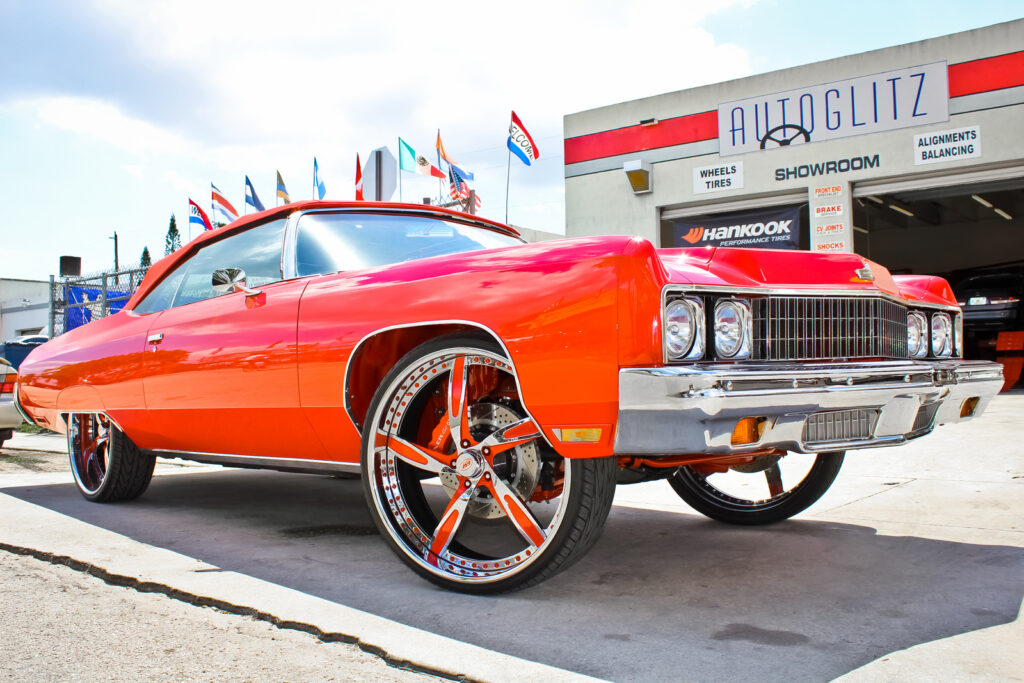
In the context of a Donk, the concepts of sprung and unsprung weight are critical in affecting the vehicle’s performance and ride quality.
Sprung weight refers to the parts of the car supported by the suspension, including the body, interior, and engine. Unsprung weight, on the other hand, includes components not supported by the suspension, such as the wheels, tires, and certain parts of the suspension system itself.
Heavier wheels increase the unsprung weight, which can have several impacts on a Donk.
First, it can degrade ride quality, as the suspension has to work harder to absorb road irregularities, leading to a rougher ride.
Additionally, increased unsprung weight can strain the suspension components, potentially leading to quicker wear and tear. It also affects handling; heavier wheels can reduce the suspension’s ability to keep the tire in optimal contact with the road, impairing traction.
Furthermore, the increased unsprung weight from heavier wheels on a Donk can significantly impact the braking system, requiring more force to slow down or stop the vehicle effectively, leading to longer stopping distances and increased wear on brake components.
This makes light, strong wheels more critical in a Donk application. We recommend Hot Rod by Boyds (HRBB) wheels, which are rugged and stylish. Custom manufactured in the U.S.A. from forged 6061 billet aluminum alloy, HRBB wheels are available in standard diameters up to 26″, while wheel widths are customizable.
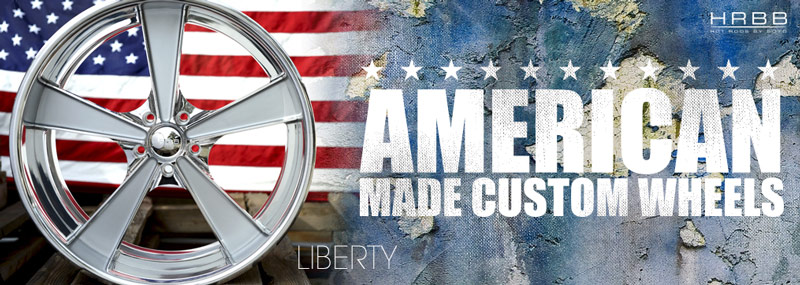
HRBB can take your sketch to reality by offering complete one-off wheel design services and custom painting and finishing options for a unique wheel creation.
Therefore, while larger wheels can enhance a Donk’s aesthetic appeal, they necessitate careful consideration of their impact on the vehicle’s suspension system and overall driving experience.
Impact of Large Diameter Wheels
The weight difference between an OEM (Original Equipment Manufacturer) 15″ steel wheel and a 23″ aftermarket wheel used for a Donk setup can be significant, depending on the specific materials and design of the aftermarket wheel. Here’s a rough estimation:
15″ OEM Steel Wheel: These wheels are typically heavier than their aluminum counterparts due to the density of steel. An average 15″ steel wheel might weigh between 18 to 24 pounds, depending on the wheel design and the car model.
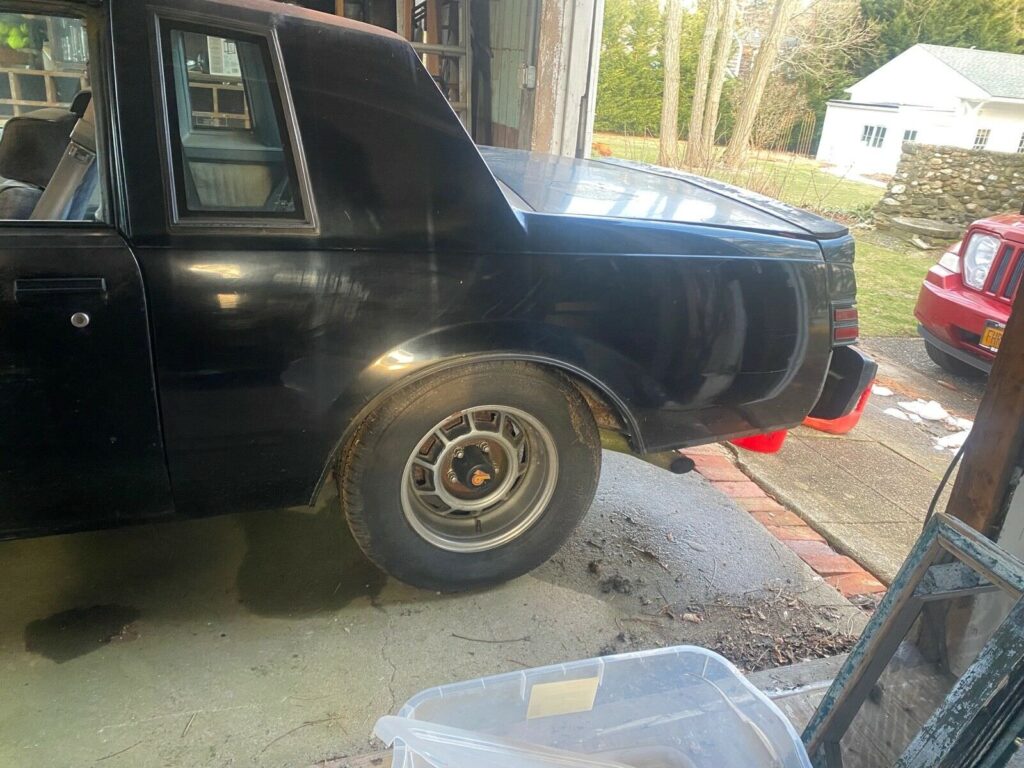
23″ Aftermarket Alloy Wheel: Larger aftermarket wheels, especially those in the 23″ range for Donk vehicles, are usually made of aluminum alloy to keep the weight down while providing the necessary strength to handle the car’s weight and driving forces. A 23″ alloy wheel can weigh anywhere from 30 to 50 pounds or more, depending on the design, thickness, and type of alloy used.
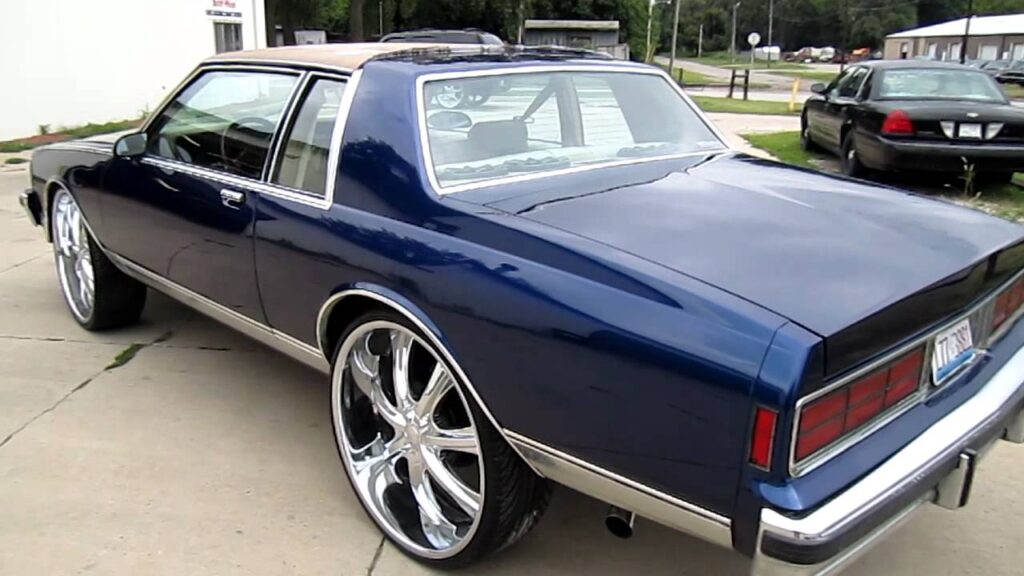
Therefore, the weight difference between an OEM 15″ steel wheel and a 23″ aftermarket alloy wheel can be roughly 12 to
26 pounds per wheel. At 20 lbs per wheel for four wheels, it’s the same impact as adding 672 lbs in sprung weight to your Donk. Add 285/40R24 tires, and the additional unsprung weight rises to over 1200 lbs. That’s a lot!
Upgrading the Braking System
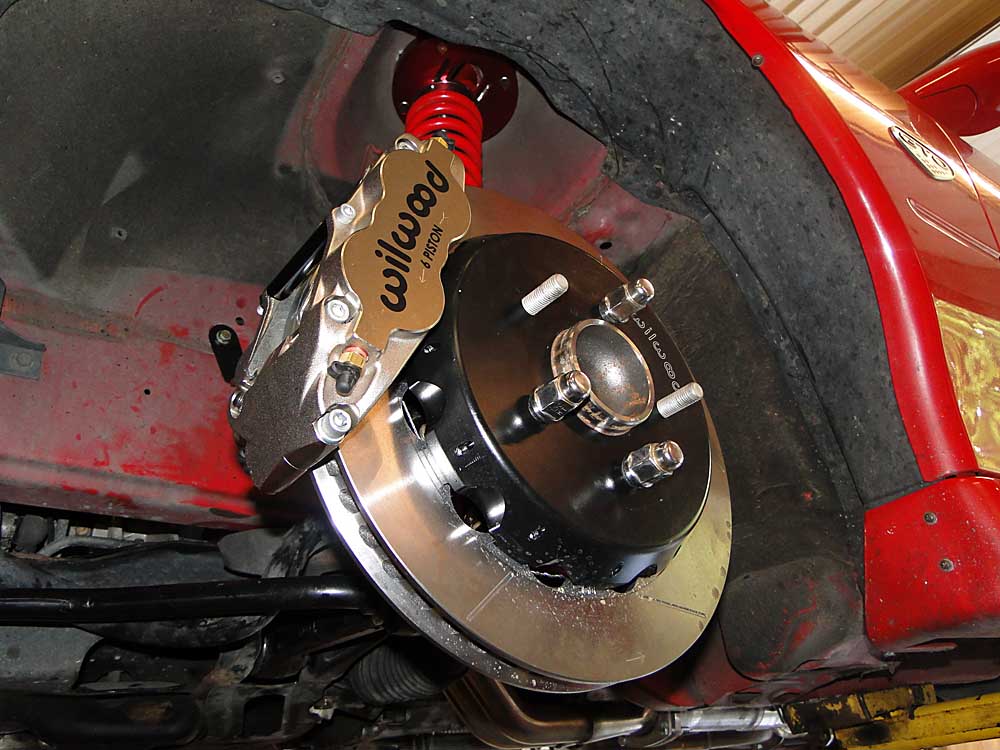
With the added weight and size of the wheels, upgrading the braking system is typically necessary to maintain safe stopping distances. This can include larger brake calipers, rotors, and high-performance brake pads.
The Importance of Brake Upgrades
When embarking on a Donk build, upgrading the braking system becomes beneficial and essential. The reasons for this necessity are multifaceted:
Increased Mass and Inertia: As seen above, larger wheels and tires add considerable weight to the vehicle, increasing the mass that the brakes must stop. Additionally, the larger diameter of Donk-style wheels increases rotational inertia, requiring more braking force to slow down or stop.
Altered Dynamics: The raised suspension and larger wheels change the vehicle’s dynamics, including its center of gravity, which can affect braking efficiency and vehicle stability during braking.
Safety: Perhaps most importantly, protecting the vehicle’s occupants and others on the road is paramount. An upgraded brake system ensures that the Donk can come to a stop effectively despite the added weight and altered handling characteristics.
Achieving the Upgrade with Wilwood Components
Wilwood Engineering is renowned for its motorsports and high-performance brake systems and components, offering a wide range of options that can be tailored to the specific needs of a Donk build. That’s why we recommend Wilwood.
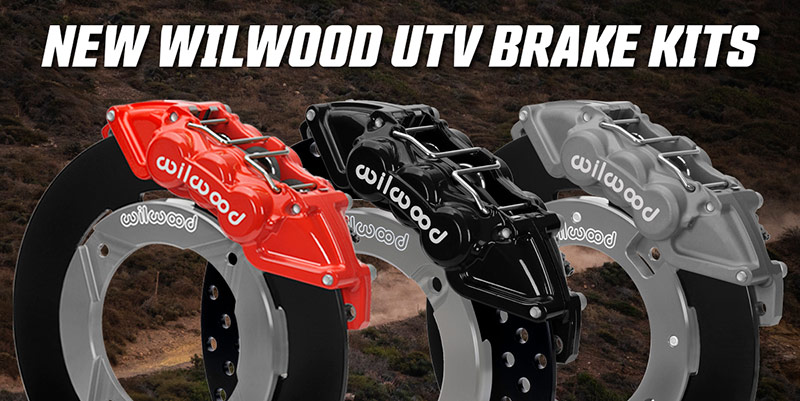
Here’s how to approach upgrading your Donk’s brakes using Wilwood components:
Assess Your Needs: Consider the specific requirements of your vehicle, including its weight, the size of the wheels, and your driving style. Wilwood can assist with this assessment that will help determine the scale of the brake upgrade needed.
Choose the Right Calipers: Wilwood offers a variety of calipers designed for different applications, from street driving to professional racing. For a Donk build, you’ll want calipers that can provide substantial stopping power and are compatible with larger rotors. Look for calipers with multiple pistons for more even brake pad pressure and improved braking efficiency.
Select Appropriate Rotors: Larger and heavier wheels require larger rotors to dissipate heat and prevent brake fade effectively. Wilwood’s rotor selection includes drilled, slotted, and vented options, which help manage heat and maintain braking performance under heavy use. Ensure the rotors are sized to fit within your wheels and are compatible with your chosen calipers.
Upgrade Brake Pads: Choose high-performance brake pads from the Wilwood SmartPad range that can handle a Donk build’s increased heat and demands. Wilwood offers a range of pad options in the SmartPad line, allowing you to balance longevity, noise, and stopping power.
Consider Brake Lines and Fluid: High-quality, stainless steel braided brake Flexlines can improve pedal feel and responsiveness. Also, use a high boiling point brake fluid like Wilwood’s EXP600 PLUS to ensure consistent performance, especially when temperatures soar.
Master Cylinder and Brake Booster: Depending on the extent of your brake system upgrade, you may need to upgrade the master cylinder and possibly add or upgrade a brake booster to ensure adequate hydraulic pressure throughout the system.
Professional Installation and Setup: Professional installation is recommended, given the complexities of brake system upgrades, especially in custom builds like Donks. This ensures that all components are correctly fitted and aligned and the system is appropriately bled, minimizing the risk of brake failure.
Testing and Adjustment: After installation, thorough testing in a controlled environment is crucial to ensure the brakes perform as expected. Adjustments to the brake bias or pedal feel may be needed to achieve the desired performance.
By following these steps and selecting the right Wilwood components for your Donk build, you can significantly enhance your vehicle’s braking performance, ensuring it is safe and enjoyable to drive, regardless of its impressive stature and appearance.
In Conclusion
In conclusion, building a Donk is not just about the aesthetic appeal of lifted suspension and oversized wheels; it’s a complex engineering challenge that demands a detailed understanding of suspension dynamics, weight distribution, and vehicle handling.
The insights above underscore the importance of customization, quality control, and staged upgrades for anyone embarking on such a project.
By choosing individual components over comprehensive kits, builders can tailor their vehicles to specific performance goals and personal preferences, ensuring a unique and satisfying build.
However, the added weight of larger wheels necessitates careful consideration of the impact on the vehicle’s suspension, braking system, and overall driving dynamics.
Upgrading to custom suspension solutions and adjusting other vehicle components are critical steps in balancing form and function. With the support of suspension specialist Aldan American, builders can navigate the complexities of custom suspension setups, ensuring their Donk turns heads and delivers a safe and responsive driving experience.
-
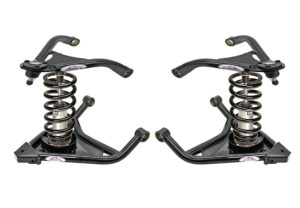
Coilover Conversion Kit – Chevrolet Impala 1958-1964 Front
$1,539.99 This product has multiple variants. The options may be chosen on the product page -
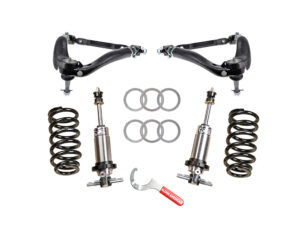
Coilover Conversion Kit – Chevrolet Impala 1958-1964 Front – SPC
$1,799.99 – $2,049.99 This product has multiple variants. The options may be chosen on the product page -
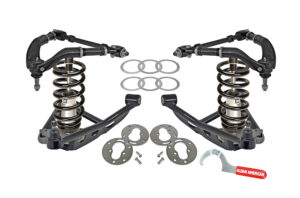
Coilover Conversion Kit – Chevrolet Impala 1973-1996 Front – SPC
$2,749.99 – $2,949.99 This product has multiple variants. The options may be chosen on the product page -
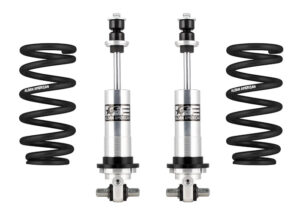
Coilover Kit – Chevrolet Impala 1958-1964 Front
$689.99 – $929.99 This product has multiple variants. The options may be chosen on the product page -

Coilover Kit – Chevrolet Impala 1965-1970 Front
$689.99 – $929.99 This product has multiple variants. The options may be chosen on the product page -

Coilover Kit – Chevrolet Impala 1971-1996 Front
$698.99 – $929.99 This product has multiple variants. The options may be chosen on the product page
-
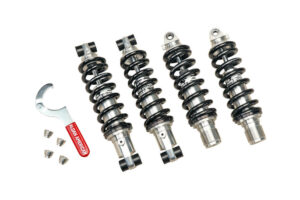
Coilover Kit – Plymouth Prowler 1997-2002 Front and Rear
$1,619.99 – $1,639.99 This product has multiple variants. The options may be chosen on the product page

